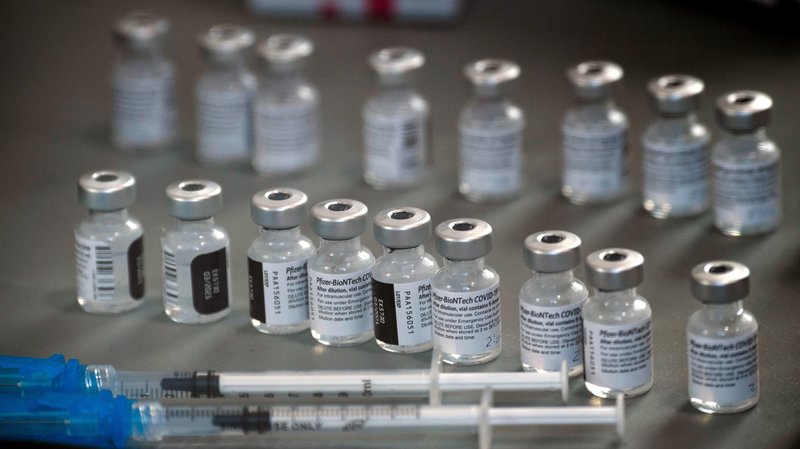The Significantly Swift Progress of COVID-19 Vaccines
Photo Credit: NPR via Getty Images
The speedy development and authorization of the COVID-19 vaccines have many Americans worried. Despite this, the vaccines, especially the Pzifer-BioNTech vaccine, are highly effective and have the potential to restore life pre-pandemic.
December 21, 2020
Ever since the news of COVID-19 first broke, the release of a vaccine has been watched by billions of people awaiting the return to life pre-pandemic. Though vaccines usually take several years to go through several phases of approval, the Pfizer-BioNTech vaccine has been introduced to the United Kingdom, just a little over a year after COVID-19 was first recognized in Wuhan. The speedy progress of this vaccine has worried many, but emergency trials have shown that the Pfizer-BioNTech vaccine is not only safe, but highly effective.
The Pfizer-BioNTech vaccine is one of the quickest vaccines to be made in history. It was produced in a matter of months by American pharmaceutical titan, Pfizer, and German biotechnology company, BioNTech. According to the CDC, this vaccine is the first to be authorized for emergency and recommended by the FDA, but two other vaccines: Jannsen, and Astra-Zeneca vaccines are going through Phase 3 of approval. Phase 3 is when vaccines are put through large scale clinical trials.
One would think that these vaccines would be in high demand, but there’s a substantial amount of people who plan on opting out. A September 17th Pew Research Center study found that “nearly as many (49%) say they definitely or probably would not get vaccinated at this time.” Two reasons for this sentiment, according to the same study, are “Concerns about side effects and uncertainty around the effectiveness of a vaccine.” These criticisms are valid, to an extent. It should be kept in mind this survey was administered before the first vaccine was authorized, so little was known about the side effects a vaccine could cause.
However, the Pfizer-BioNTech vaccine has gone through Phase 3 and the results were monumental. According to Pfizer’s official website, “Analysis of the data indicates a vaccine efficacy rate of 95% in participants without prior SARS-CoV-2 infection and also in participants with and without prior SARS-CoV-2 infection.” In the same statement, Pfizer estimates that 50 million of the vaccines will be produced by the end of 2020.
Side effect wise, symptoms such as “injection site pain, tiredness, headache, muscle pain, chills, joint pain, and fever,” were reported by the FDA. There’s also a chance of an allergic reaction, but the FDA states that this is, “a remote chance.” One rumor circulating the internet implicates the vaccine as causing Bell’s palsy, which causes temporary weakness or paralysis of facial muscles. The FDA found the rate at which Bell’s palsy occurred coincided with the general population and the main culprit, according to USA Today, is believed to be Herpes. The FDA will continue to monitor those vaccinated for large scale cases of Bell’s palsy.
On who will receive the vaccine, the FDA recommends the vaccine for those who are sixteen years and older. According to the AMA, healthcare workers and nursing home residents will be the first to receive the vaccine, then essential workers such as those in education, utilities, and corrections are projected to be next, along with adults with severe health conditions and those 65 years or older.
On December 18th, 2020, the Moderna vaccine was authorized for emergency use by the FDA. While the Pfizer-BioNTech vaccine has been authorized for use in Americans sixteen years and older, the Moderna vaccine has been limited to those eighteen and up. Many of the side effects are the same as the ones listed for the Pfizer-BioNTech vaccine, but one new side effect is the occurrence of, “swollen lymph nodes in the same arm as the injection.” Because this vaccine is even more recent than the Pzifer-BioNTech, little is known about its effects on the population at large. As more comes out about potential COVID-19 vaccines, more progress will be made in the world’s battle against it. The first administration of the COVID-19 vaccine in the United States occurred on the 14th of December. These are trying times for the country and world at large, but as 2021 nears, the future is beginning to look brighter.


